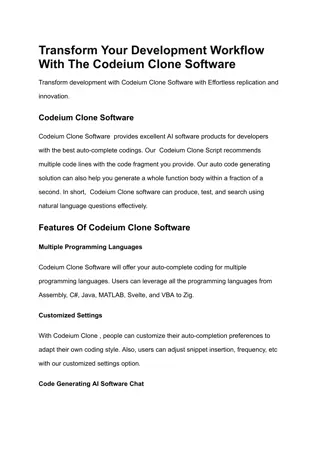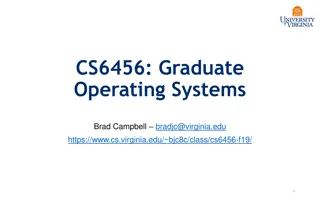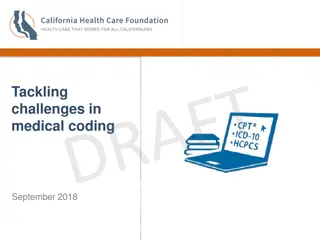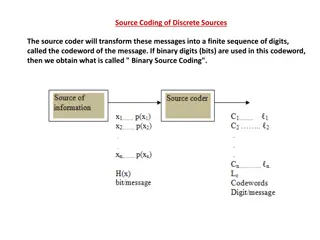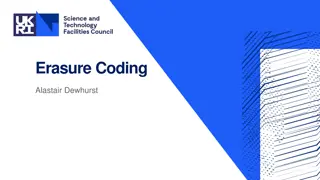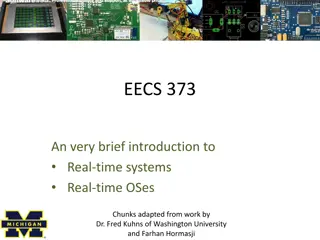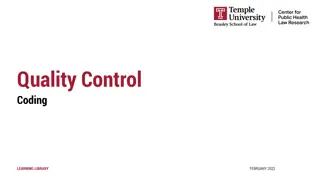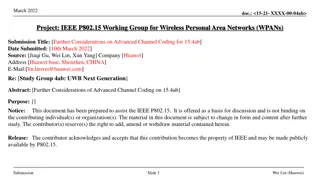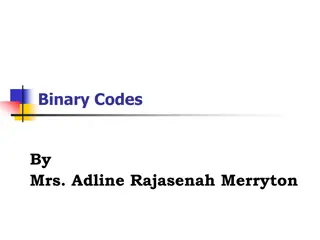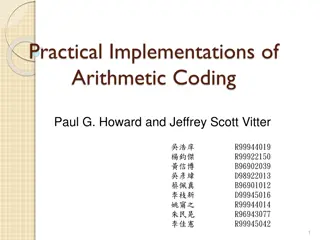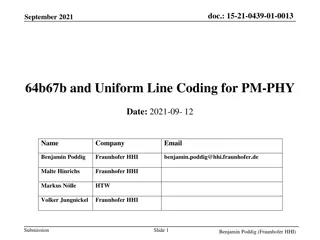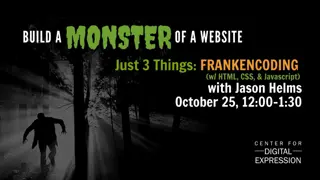
Real-Time Systems in Medicine and Biology: Challenges and Solutions
Explore the intersection of software, hardware, and biology with a focus on real-time systems. Discover the complexities of meeting stringent time requirements in medical and cyber-physical applications, and learn about designing labs and avoiding common pitfalls. Join the journey of enhancing bioelectricity understanding through practical examples and hands-on experiences.
Download Presentation

Please find below an Image/Link to download the presentation.
The content on the website is provided AS IS for your information and personal use only. It may not be sold, licensed, or shared on other websites without obtaining consent from the author. If you encounter any issues during the download, it is possible that the publisher has removed the file from their server.
You are allowed to download the files provided on this website for personal or commercial use, subject to the condition that they are used lawfully. All files are the property of their respective owners.
The content on the website is provided AS IS for your information and personal use only. It may not be sold, licensed, or shared on other websites without obtaining consent from the author.
E N D
Presentation Transcript
EN1 Electricity inside of you Fall 2022 Tufts University Instructor: Joel Grodstein joel.grodstein@tufts.edu Realtime systems 1
Big picture of the course What is bioelectricity? Neurons and working with the nervous system Cardiac bioelectricity Worms EN1 EIY Joel Grodstein 2
Todays problem How can we build systems where software and hardware work together to meet real-time constraints imposed by medicine and biology Some examples Neural prosthetic must read your SEMG and move your prosthetic now, not two seconds later Defibrilator must read your ECG, notice the potentially fatal arrhythmia and shock your heart ASAP Fluoroscopy/ultrasound. The feedback must be essentially instantaneous, but images are noisy and need signal processing Anti-lock brakes & traction control must work fast EN1 EIY Joel Grodstein 3
Why is our problem hard? Medical and cyber-physical systems have stringent real-time requirements But we all know that software speed can be less than completely predictable sometimes our apps run fast and sometimes they don t can depend on battery state, ambient temperature, how long since a reboot, EN1 EIY Joel Grodstein 4
Designing our labs Hardware picture body sensor AD8232 preamp PyBoard A2D PyBoard computation Software picture sample at 1K samples/sec per-sample compute (moving avg, baseline fix) every 100 samples, call user function muscle_fun() EN1 EIY Joel Grodstein 5
How not to build it User s line 1 Check the system clock: time for an A2D? User s line 2 Check the system clock: time for an A2D? User s line 3 Check the system clock: time for an A2D? User s line 4 What s the problem with this? Checking over and over wastes time and clutters code it can get worse: what if we also want a new audio DAC sample every 20 kHz? EN1 EIY Joel Grodstein 6
How not to build it What if we just don t check as often? Say only every 5 instructions? We might do our ADC sample too late If the DAC fires too late, our audio will sound funny User s line 1, 2, 3, 4, 5 Check the system clock: time for an A2D? User s line 6, 7, 8, 9, 10 Check the system clock: time for an A2D? User s line 11, 12, 13, 14, 15 Check the system clock: time for an A2D? User s line 16, 17, 18, 19, 20 EN1 EIY Joel Grodstein 7
Timers and interrupts A better solution: timers and interrupts Main code runs A timer interrupts it every (e.g.,) 1ms Interrupt handler runs Interrupt handler finishes Return to main program EN1 EIY Joel Grodstein 8
read ADC n_reads += 1 update moving avg(s) if (n_reads % 100 == 0): call muscle_report() go 1kHz timer pause main program turn on a green LED set up timer(s) while (n_reads < TOTAL_READS): pass turn off the green LED turn off our timer(s) done resume EN1 EIY Joel Grodstein 9
Group exercise Let s say your muscle_fun() tried to play a different note depending on how hard you activated your biceps it called play_note(), which calls dac.write_timed(buf, samples_per_sec) reminder: buf is an array of samples, and samples_per_sec tells the PyBoard how fast to give successive samples to the DAC What would the picture on the last slide look like now? EN1 EIY Joel Grodstein 10
Lab 4 code Analog capture 11
Step 1m: set up a timer to call cb_irq every 1ms Capture your sEMG at 1000 samples/second SAMPLE_FREQ=1000 tim = pyb.Timer(4) tim.init(freq=SAMPLE_FREQ, callback=cb_irq) print ("Setup timer") MicroPython magic to actually turn on the timer Call cb_irq every 1ms. Our main routine gets interrupted to do this 12
Step 2m: the main routine waits till we re mostly done So 12000 samples N_SECONDS=12 NSAMPLES =SAMPLE_FREQ * N_SECONDS pyb.LED(2).on() while n_reads < NSAMPLES: pass pyb.LED(2).off() print ("Done sampling") Turn on the green LED We ve collected all of our samples; turn off the green LED Just keep checking, over and over. 13
Step 3m: main routine saves our data to flash Turn on the red LED while we re writing flash pyb.LED(1).on() with open('data.csv','w') as f: for i in range(NSAMPLES): f.write(vals[i]) pyb.LED(1).off() print ("Done writing data1") Do the actual writes, one by one using a loop All done writing; turn off the red LED 14
Step 1i: the interrupt-handler sequence The function that gets called every 1ms. But it s dangerous to do much here def cb_irq(timer): micropython.schedule (cb, timer) The function that really does the work, now that the main code is in a good place def cb(timer): global adc, n_reads, vals if (n_reads<NSAMPLES): vals [n_reads] = adc.read() n_reads += 1 else: timer.deinit() Have we done all of the reads yet? No: do a read, save it in our array Yes: turn off the times so no more interrupts happen 15


